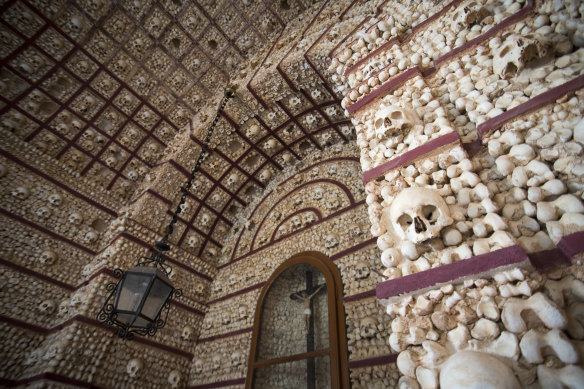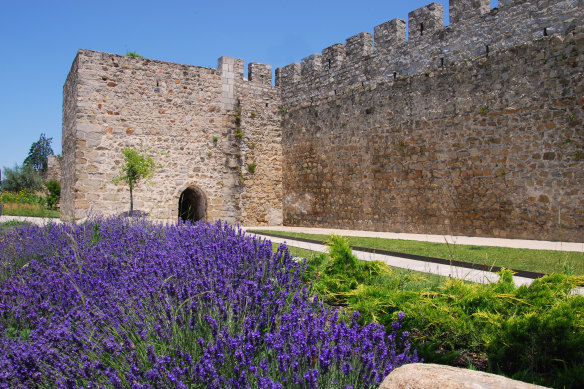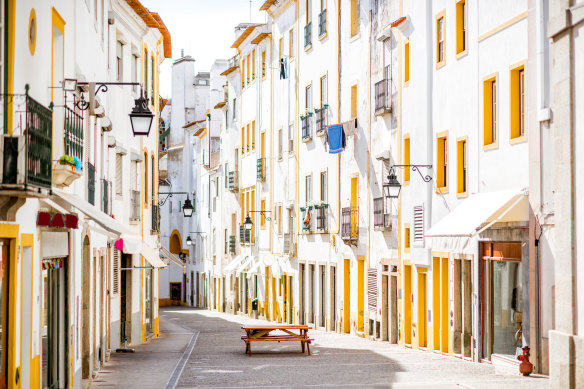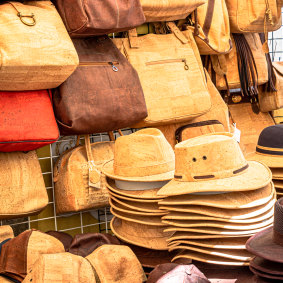This ancient Portuguese city was once the residence of kings
By Jane Cornwell
“We bones that lay here wait for your bones”. The inscription sits over the entrance to the Capela Dos Ossos, a chapel inside a 15th century church within the walled historic centre of Evora in southern Portugal. They watch us, or seem to, these 5000 skeletons arranged into patterns along the building’s columns and walls, legacy of a period when graveyards were overflowing, reminders that – since we’re all goners anyway – we had better make the most of our brief stint on Earth.

The Capela Dos Oossos at the Igreja do Carmo.Credit: Getty Images/iStockphoto
A sense of time passing, of history unfurling, pervades Evora, a UNESCO World Heritage Site since 1986 and the capital of the Alentejo region, a rural interior of rolling plains and fortified towns, of vineyards, cork and oak trees and storks nesting atop telegraph poles.
Out here in the bird-sung quiet, a bumpy 15-kilometre drive from Evora (itself an hour out of Lisbon), lies the Almendres Cromlech, the largest megalithic monument on the Iberian Peninsula. Ninety-five standing stones, some engraved to represent people whose faces have suns for eyes, crescent moons for mouths and shepherds’ crooks – apparently early symbols of power – for noses.

The walled city of Evora.
Like the Neolithics, the Romans also gazed up at the stars over Evora, probably from the hilltop on which they built what is now called the Temple of Diana – 14 Corinthian columns capped with white Estremoz marble. Variously a mosque during Moorish rule (eighth to 12th century), a medieval market, a walled-up fortress and a slaughterhouse, the temple was uncovered in its near pristine state in the late 19th century. It remains an iconic landmark, and a student hang-out (Evora has a large university), to rival the soaring conical spires of the adjacent Roman-Gothic cathedral, Portugal’s largest, which has a museum packed with church-gotten treasures and views over the city and ancient-aqueduct-sporting countryside.
Daily life amid Evora’s whitewashed houses, storied architecture and oh-so-strollable cobbled streets feels calm, unhurried. In Praca de Giraldo, the central square, coffee drinkers sun themselves at tables, a busker with an electric guitar plays long, lazy chords and a sign over the pastry cabinet in Cafe Arcada instructs “Do not touch the glass, the cakes are sleeping”. An ornate marble fountain topped with a metal-hewn royal crown – Evora was the residence of 15th century Portuguese kings – sits empty before the Renaissance facade of the Church of Santo Antao (free entry, or 50 cents if taking photos). Through Moorish-styles arches are wine bars selling mature, full-bodied reds.

Residential buildings in the walled city of Evora.Credit: Getty Images/iStockphoto
A street is given over to Alentejo handicrafts, most fashioned from cork: placemats, handbags. On a mannequin in a window, a crocheted cork bikini. The region’s cork trees, cousins of the Holm oak, also prevalent, are harvested/peeled every nine years to allow for regeneration. Pork, a traditional regional dish whether fried, stewed, grilled or served porco a Alentejana, braised with clams, tends to free-range for a few years while feasting on acorns. “Look how shiny and healthy this ham is,” says our waiter at Restaurant d’IBerica, standing over a small table and expertly carving up an upside-down haunch with a vertical trotter.

Cork bags and hats.Credit: Getty Images/iStockphoto
The Portuguese have a word for such slow living, for spending time in harmony with nature, animals, cosmology and the seasons. Vagar, they call it, a sentiment embraced by Alentejo’s traditional cante alentejano, chorale groups who sing, unaccompanied, songs about social customs, environmental wonders and working in the fields. Evora’s own Cantes de Evora often perform outdoors, or onstage in the gilt-and-velvet surrounds of the sumptuous Teatro Garcia de Resende, a 19th century theatre with four tiers, opera boxes and winged cherubs painted onto its sky-blue ceiling.
That Evora was chosen as a European Capital of Culture 2027 (a titled it shares with Liepaja, Latvia) was based on this concept of vagar, a quality deemed aspirational by an increasingly chaotic world. “Vagar is absolute awareness of humankind’s constant relationship with the universe,” says Paula Mota Garcia, team co-ordinator of Evora_27, the organisation running the European Capital of Culture 2027. She speaks from a historic building housing Evora_27’s offices, a 10-minute walk from Capela dos Ossos, like most places inside Evora a 10-minute walk from anywhere.
“Our projects will ask questions, remind us of our co-existence and co-evolution. In Evora the memory of those who have been and gone is very present. But we are slowing down, even as we’re passing through.”
The details
Fly
Emirates flies to Lisbon from Sydney and Melbourne via Dubai. See emirates.com
More
For Evora as a European Capital of Culture 2027, see evora2027.com/en/
For information about Evora, see visitevora.net/en
The writer travelled at her own expense and visited Evora as a guest of Imaterial Festival.
Sign up for the Traveller Deals newsletter
Get exclusive travel deals delivered straight to your inbox. Sign up now.